Description
Description: Chinese Transitional/Qing dynasty statue of a smiling boy, decorated with over glaze enamels in the wucai palette. As said in the description of the reference figure from the Butler’s collection seen in the penultimate picture, these statues are known of having been made from 17th to early 18th century. Like the boy of that figure, our one too has a lingzhi shaped wrap covering his shoulders, with hanged precious objects, and is holding a pot with a lotus bud. It is worth to note that on this statue the wrap is secured by a Charm lock (see the Notes below).
Dating: Abnout Shunzhi (1644 – 1661)
Size: 28 cm high
Provenance: Antiquarian market. Ex Bulgari collection. (Bulgari is a high jewelry brand worldwide known as BVLGARI).
References: In the last two pictures, a similar figure from teh Butler’s collection and another one sold by Christies.
Notes: From Wikipedia:
“Lock charms (Traditional Chinese: 家鎖 / 鎖片), literally translated: “Family lock” or “lock piece”) are Chinese numismatic charms shaped like ancient Chinese security locks. Their shape resembles a basket or in most cases the Chinese character for “concave” (凹). Like other types of Chinese numismatic charms, lock charms are meant to protect the wearers from harm, misfortune, and evil spirits, and to bless them with good luck, longevity, and a high rank (through the imperial examination system). In particular, this talisman is meant for young boys, to help “lock” them to the earth, to guard them from death.”
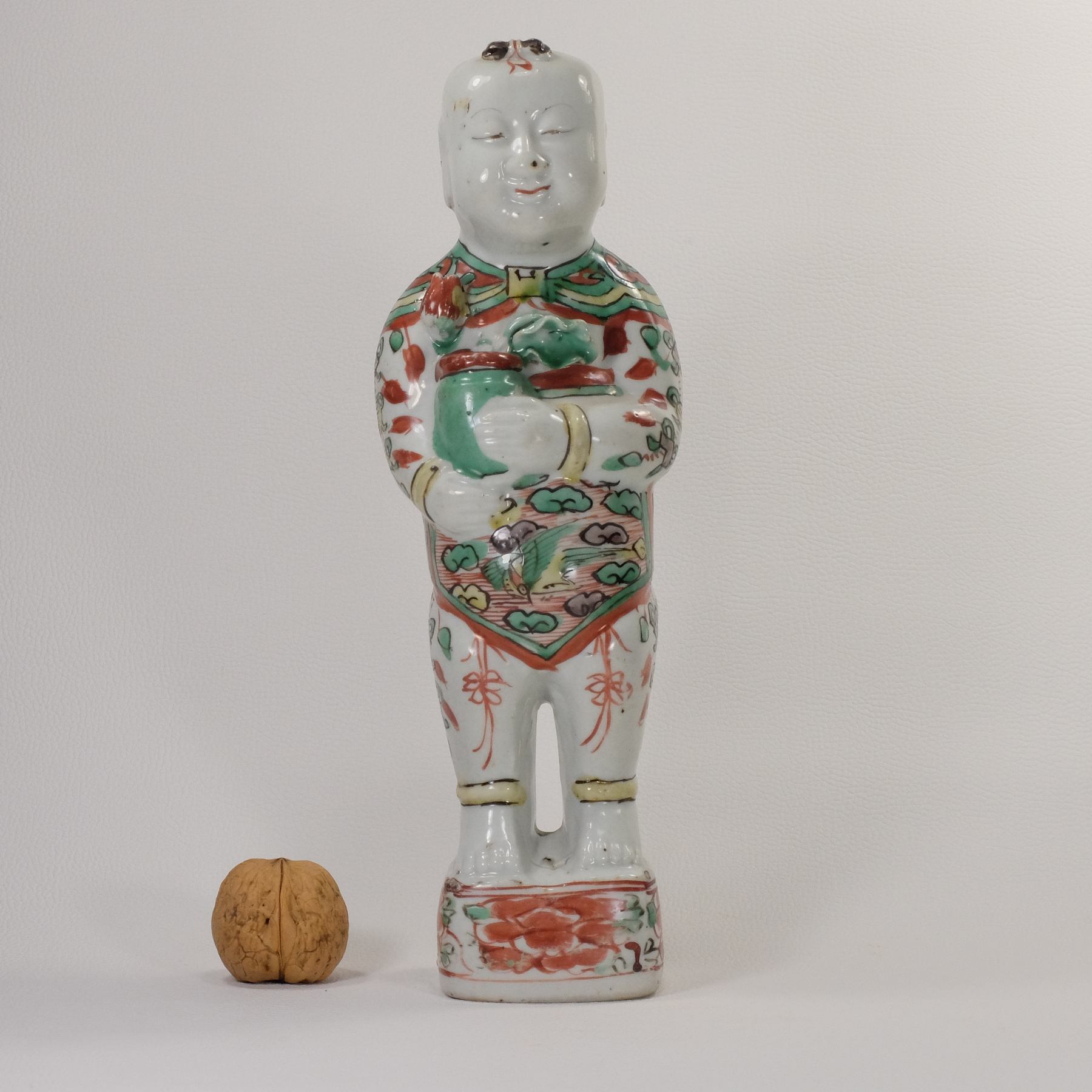
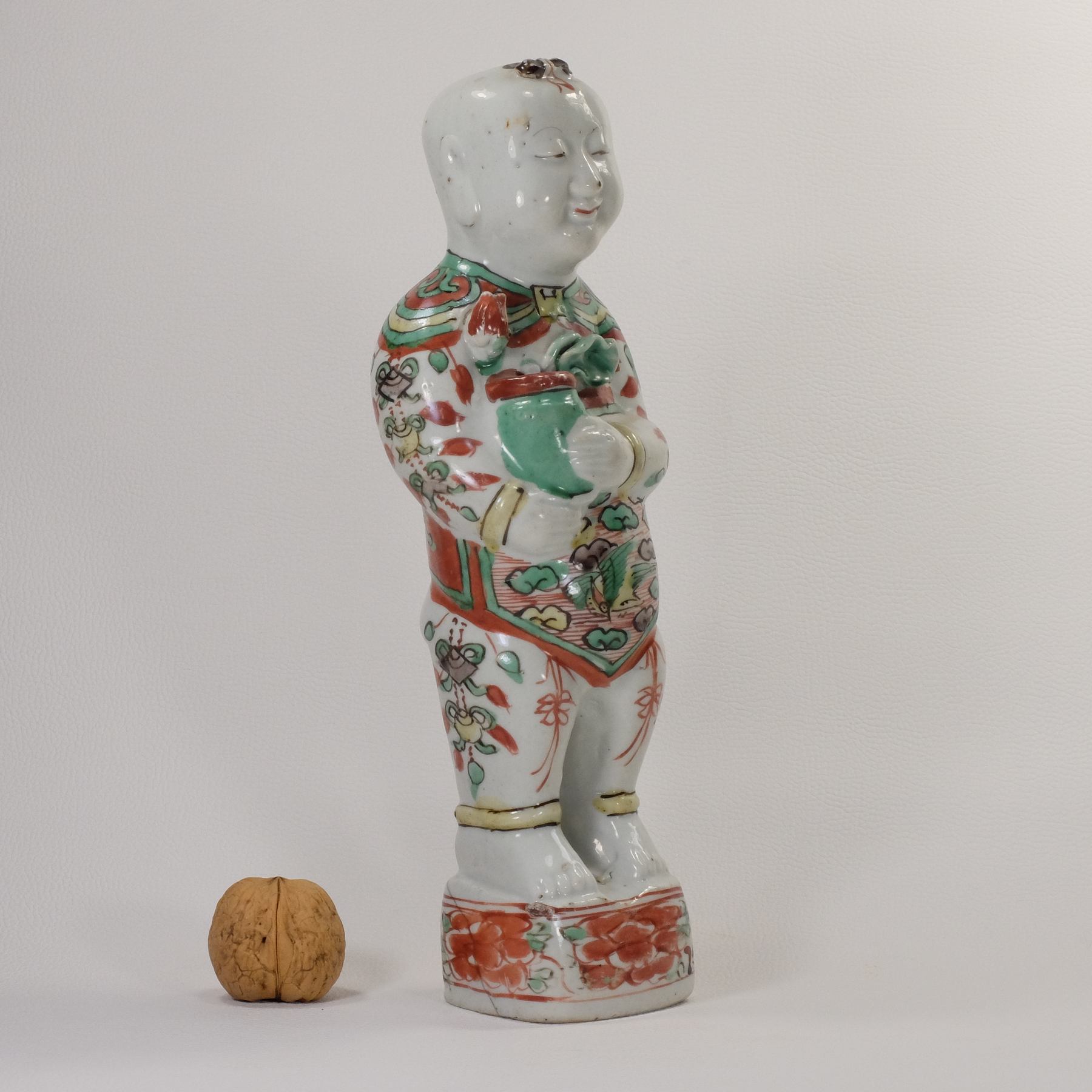
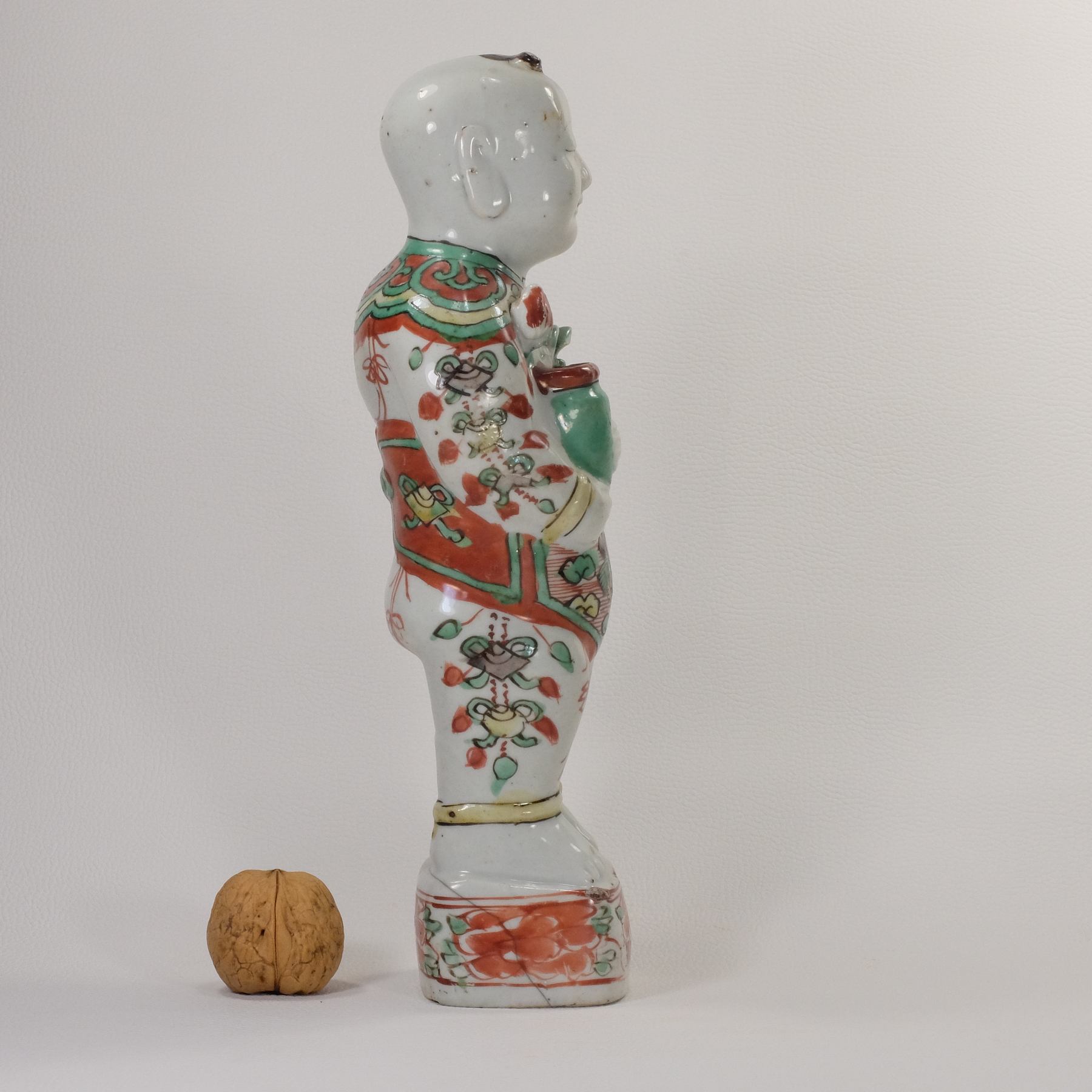
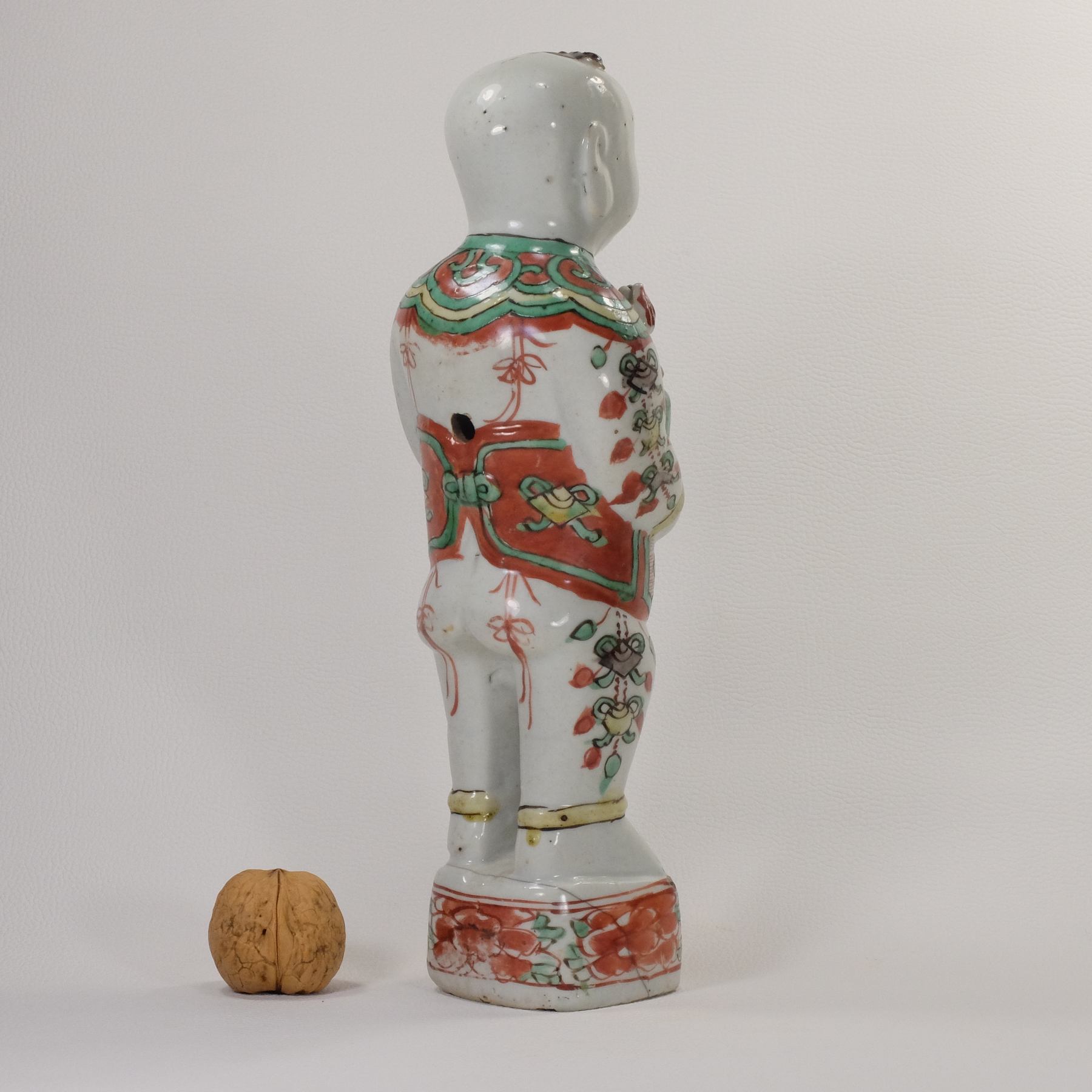
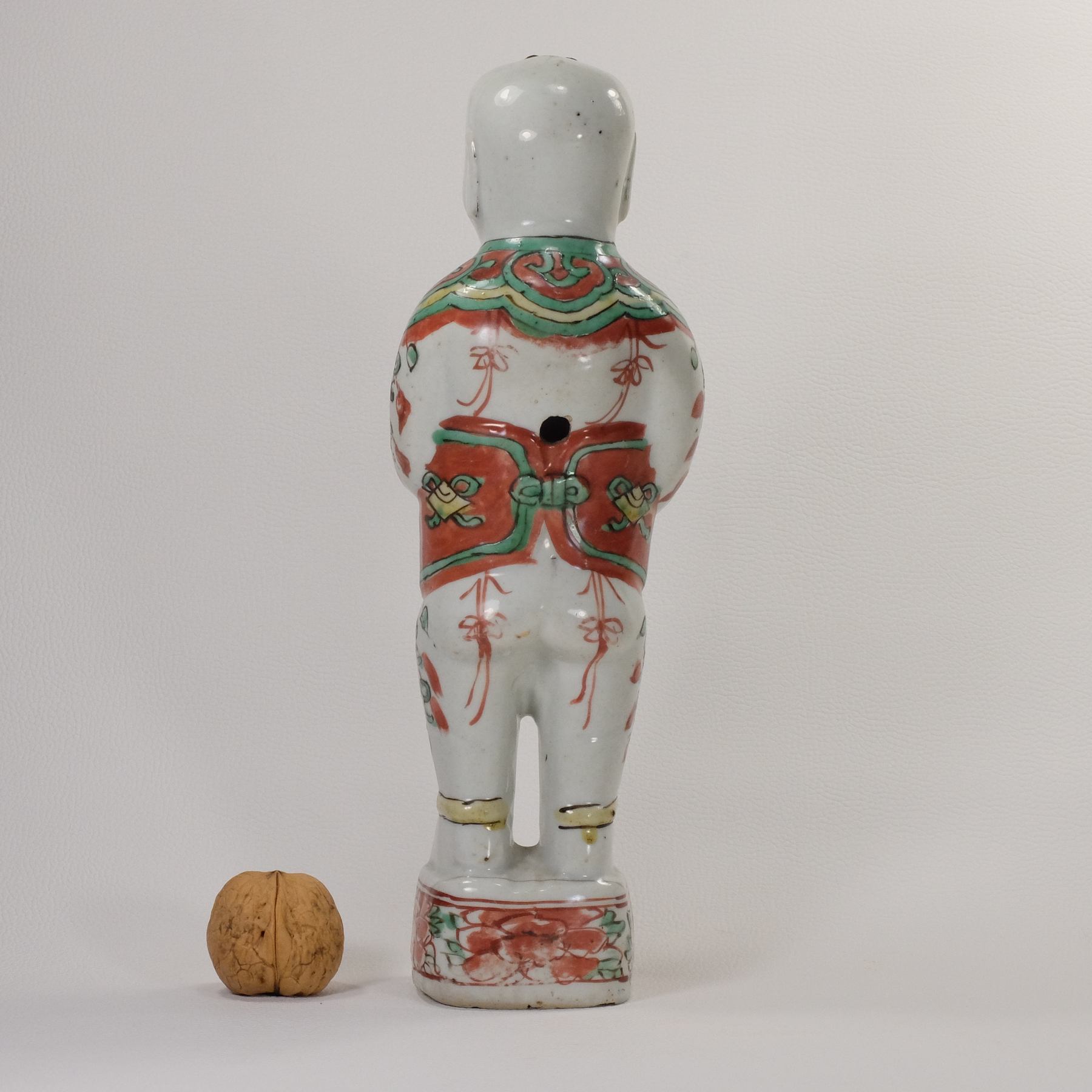
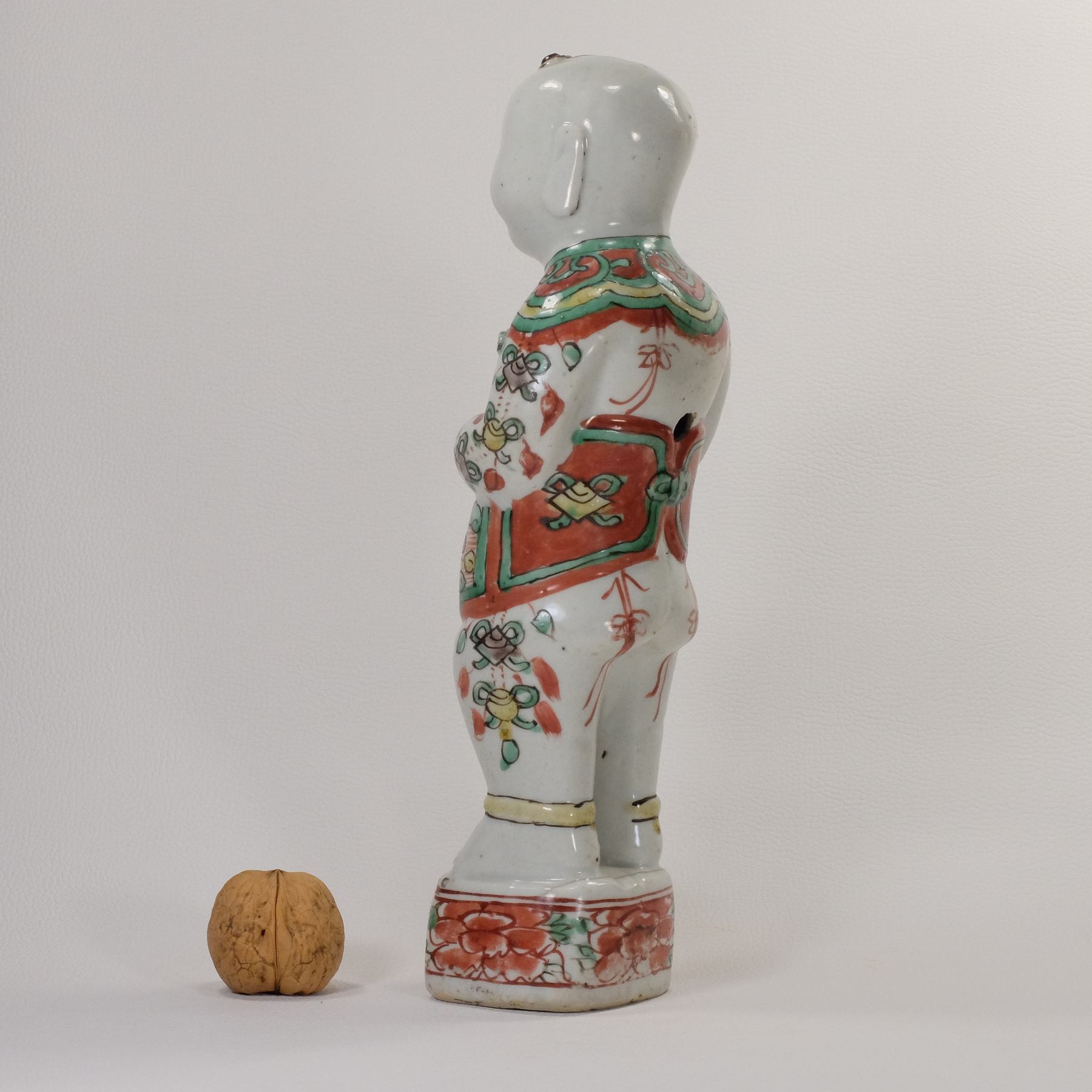
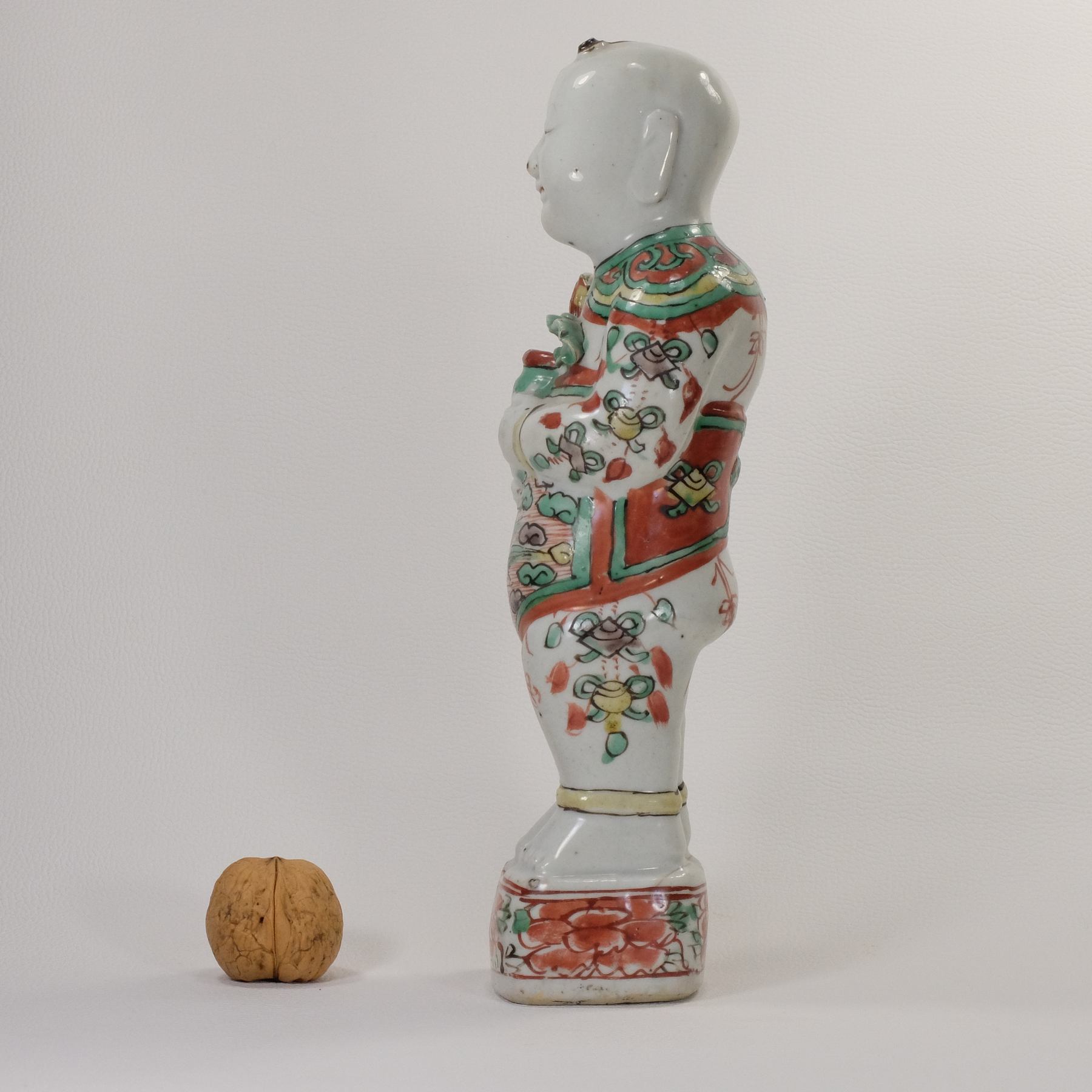
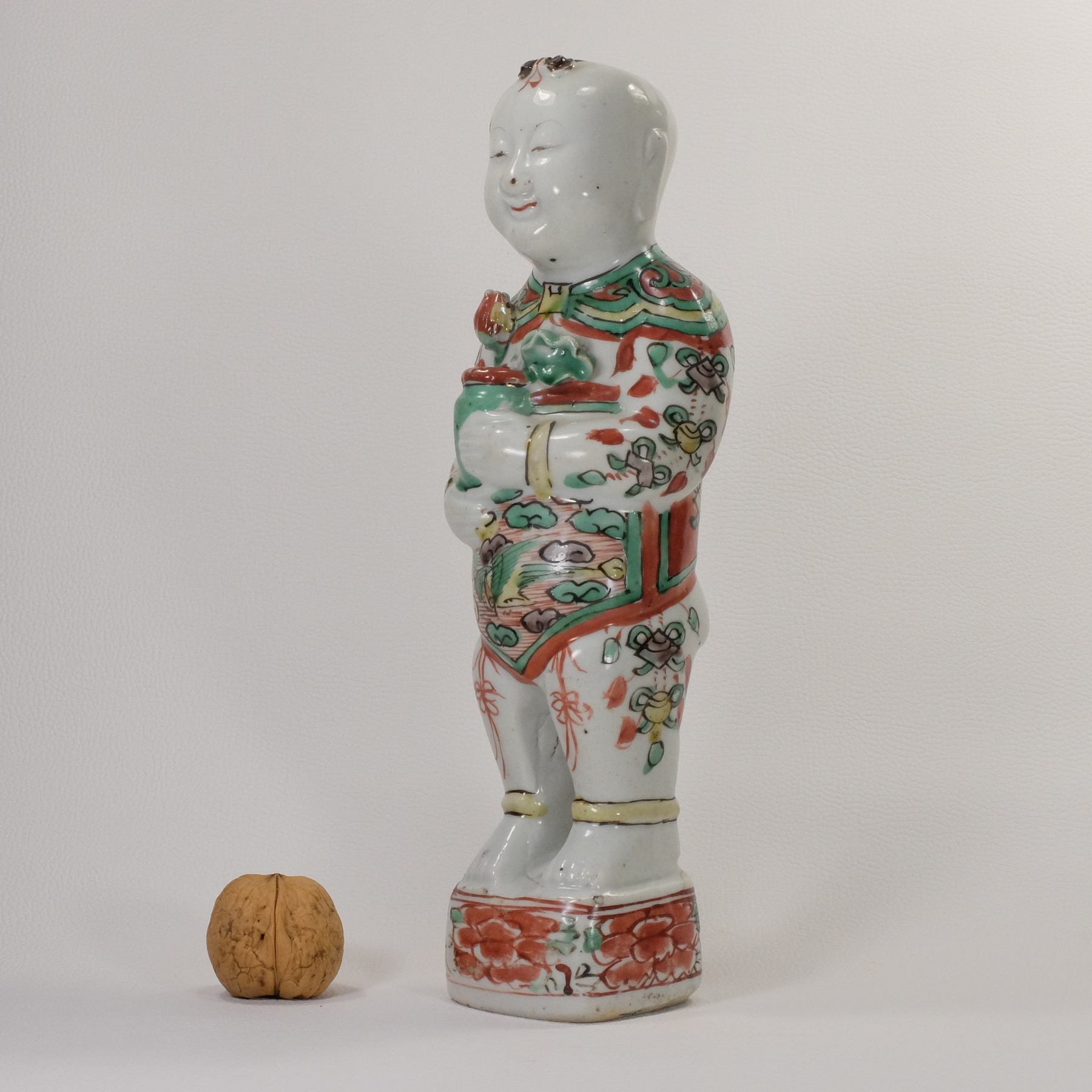
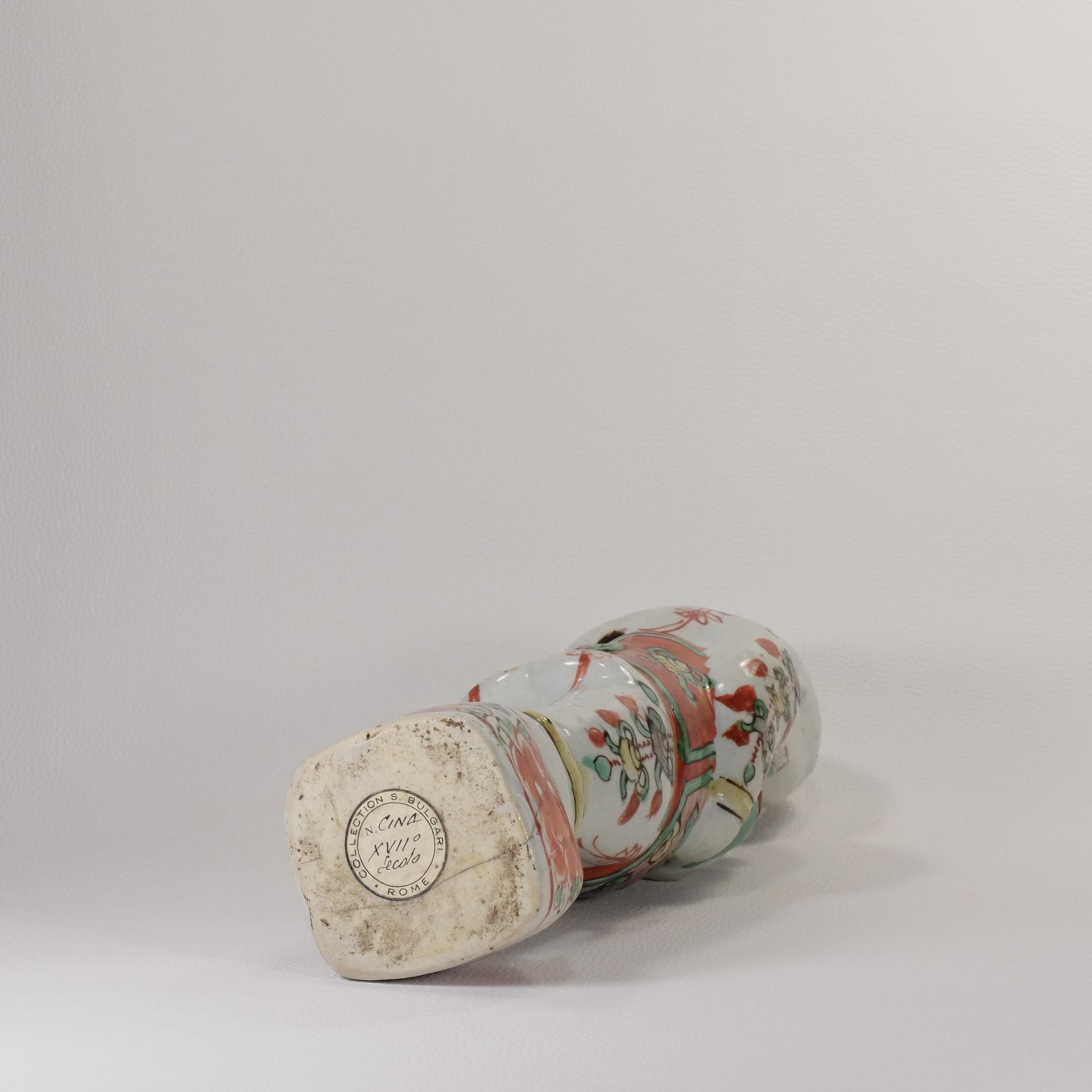
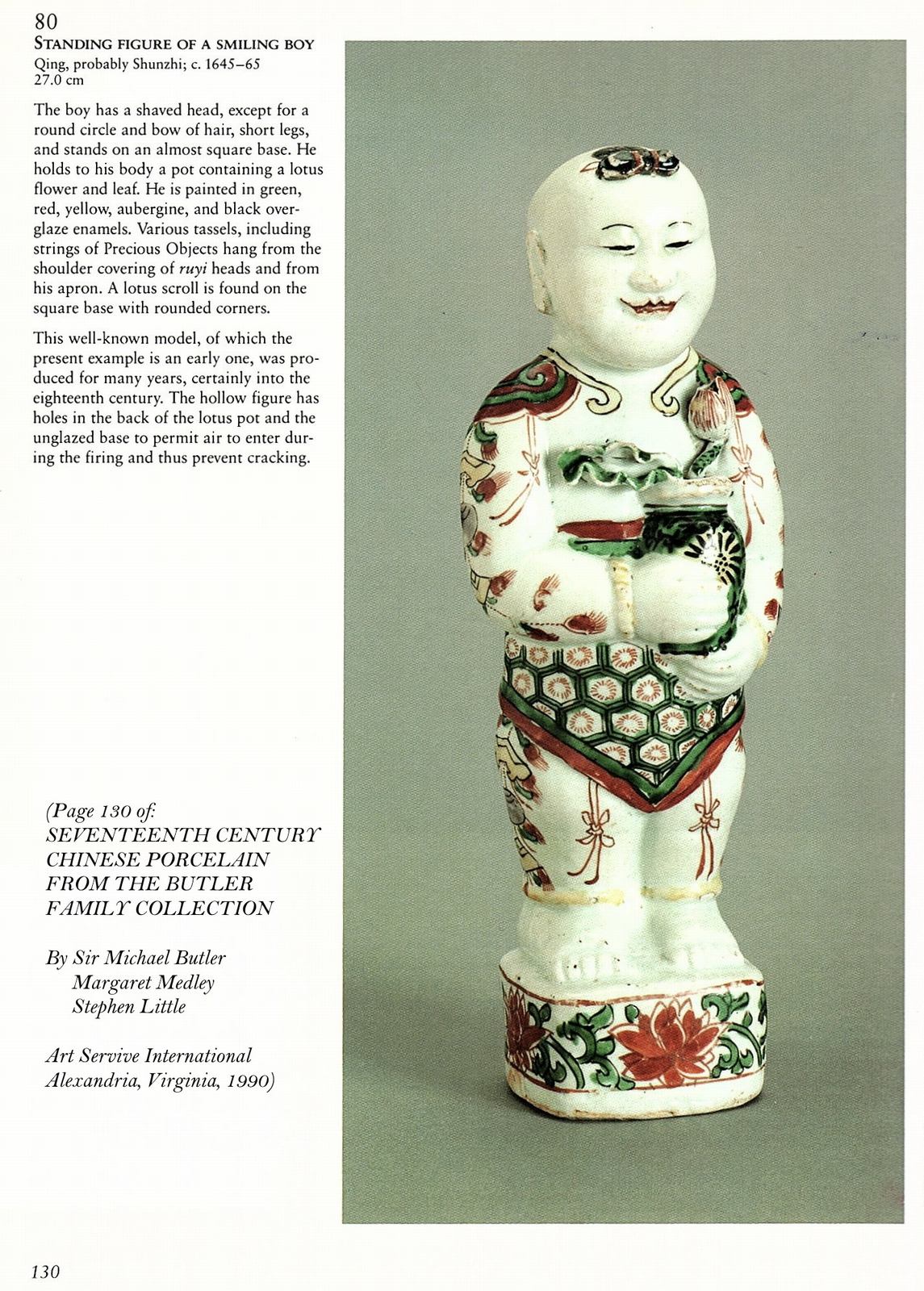
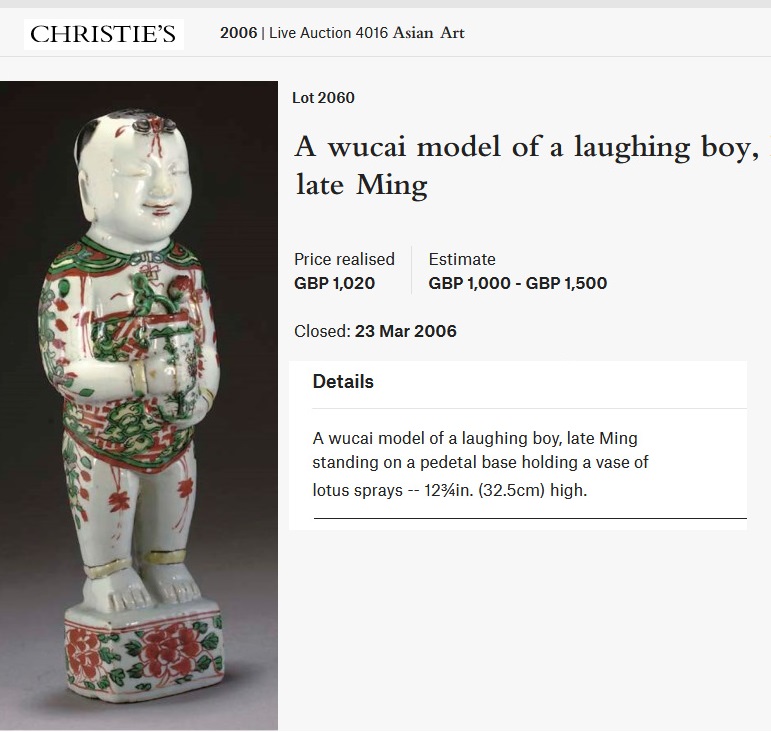
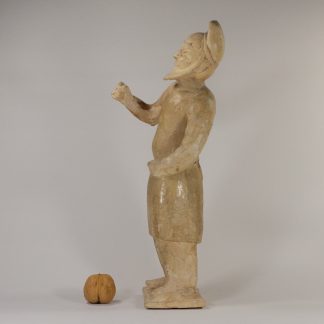
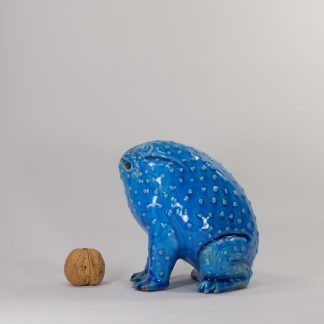
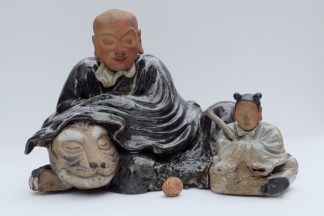
Reviews
There are no reviews yet.